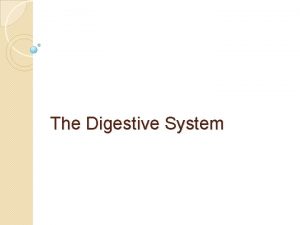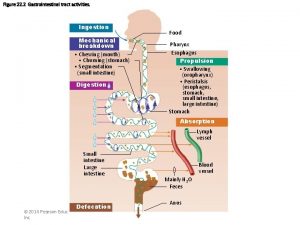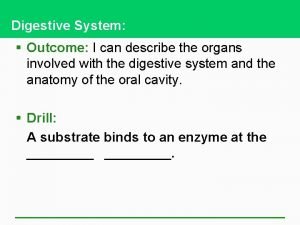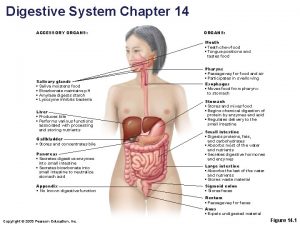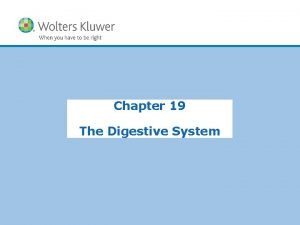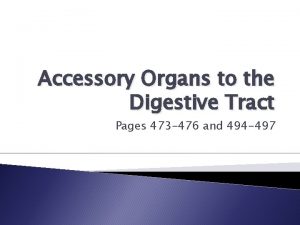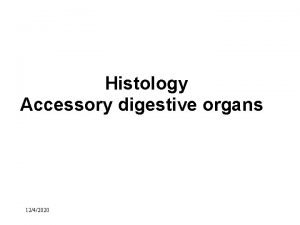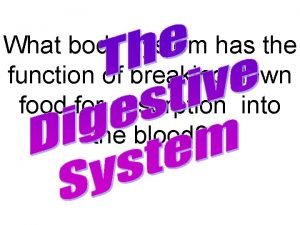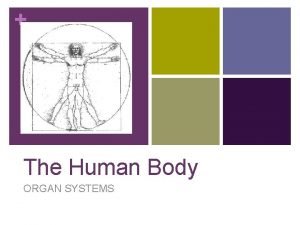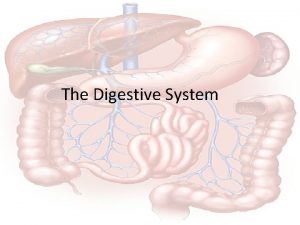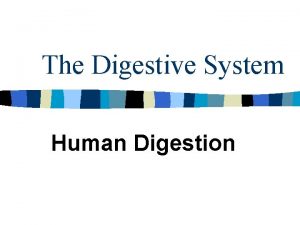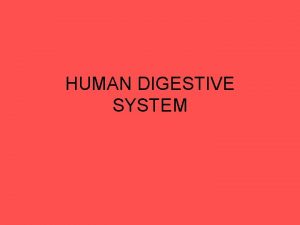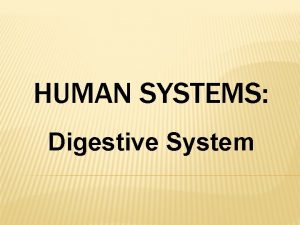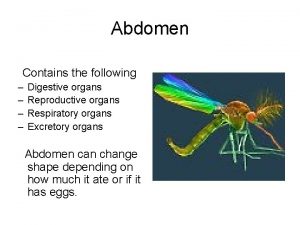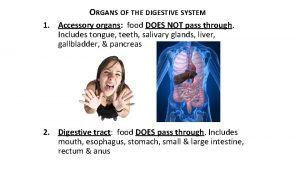Human Digestion Human Digestion The Digestive Organs The











- Slides: 11

Human Digestion

Human Digestion The Digestive Organs The Eyes + The Nose Mechanical Digestion p The Mouth p The Stomach Chemical Digestion p The Mouth p The Stomach p The Small Intestine Rectum

The Eyes + The Nose Start the saliva (spit) p Warm up the Stomach Glands p Sense of Smell Plays a Huge Role in the Ability to Taste p

The Mouth p Contains: n Saliva that is Slightly Acidic n Amylase = an enzyme that brakes starch molecules into simple sugars (can’t break up protein or fat)

The Human Food Processor Stomachp Peristalsis = rhythmic contraction of stomach muscles to break down food p Start Protein and Fat Digestion by HCl (Hydrochloric Acid, 1 -2 p. H) and Pepsin p Blends food into a thick soupy mass called CHYME p

The Small Intestine Finishes the Digestion of Proteins into Amino Acids p Bile from the liver lets fats mix with water to finish fat digestion p Absorbs (in order of digestion) Sugars, Amino Acids, Fats, Vitamins and Minerals through Microvilli p

The Large Intestine Top of the Large Intestine is known as the colon p The Colon absorbs water p Squeezes Waste into a compact bundle p

The Rectum Here is your Last chance to absorb water before packing up the NO GOOD foods and shipping them OUT p Moves waste out of the body p

The Liver Cleans up Dead Blood Cells p Stores Sugars and Vitamins p Makes Bile p n n p Bile emulsifies fats (breaks into smaller pieces) Bile neutralizes acids Gall Bladder stores the bile made by the liver

The Pancreas Regulates sugar levels p Sends Glucagon and Insulin to the Small Intestine p Glucagon – raise blood glucose levels p Insulin – Lowers blood glucose levels p

True or False Bile breaks down large starch molecules into small starch molecules False: breaks down fats Bile is made in the liver True: then stored in gall bladder Amylase breaks. True: poly-> down starch monosaccharide into maltose Lipases are enzymes that act specifically on proteins Fats are broken down into fatty acids False: breaks down fats and glycerol True: Lipids are made of fatty acids connected by a glycerol
 Function of gastric juice
Function of gastric juice Transverse mesocolon
Transverse mesocolon Accessory digestive organs
Accessory digestive organs Mouth function in digestive system
Mouth function in digestive system Accessory organs of the digestive system
Accessory organs of the digestive system Accessory organs of the digestive system
Accessory organs of the digestive system Hemopoeisis
Hemopoeisis Venn diagram of mechanical and chemical weathering
Venn diagram of mechanical and chemical weathering It is a bony cage enclosing vital human organs
It is a bony cage enclosing vital human organs Internal organs human body
Internal organs human body Digestive system facts
Digestive system facts Biggest muscle in human body
Biggest muscle in human body
